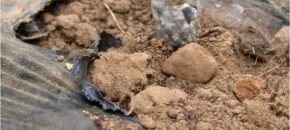Are you crystal clear on the purpose of plant-back restrictions and on the length of time required between a herbicide application and the planting of your next crop or cover crop? If not, the guidance below should help. It was developed based on a poster presentation made during the 2022 annual meeting of the Weed […]
Continue reading...Phytophthora and Pythium control during wet weather
Most of New Jersey has been plagued by heavy regular rains and pop-up thunderstorms making conditions ideal for pathogens such as Phytophthora and Pythium. Unfortunately, Pythium and Phytophthora blight can be found on most farms in the southern part of the state. Poor crop rotations with susceptible hosts only make matters worse. The Phytophthora pathogen […]
Continue reading...Resources for New Jersey Licensed Private Pesticide Applicators & Growers – 2022 Meetings Tools for Regulatory Compliance
In 2022 Rutgers provided growers with regulatory updates in presentations at NJACTS, the Blueberry Open house and South Jersey Vegetable and Field Crop, North & South Jersey Tree Fruit, and Blueberry Twilights. Thanks to all host farms. Lamin… Read More »
Continue reading...Controlling fungal leaf blights of Carrot
Powdery mildew, Alternaria and Cercospora are three important fungal foliar pathogens that can cause early defoliation in carrots, thus reducing yields and making harvest difficult. Each pathogen produces distinct symptoms.
Continue reading...Vegetable IPM Update 7/06/22
Sweet Corn Note: No trap data from the southern counties is available this week, so maps will not appear in this edition. European corn borer (ECB) moths remain a sporadic, low component of blacklight trap catches. Feeding in pre-tassel stage is still present in some areas, but is now less common. ECB injury over the […]
Continue reading...Diagnosing Southern blight and White mold in tomato and pepper

There have been a few reports of Southern blight (Sclerotinia rolfsii) and White mold (Sclerotinia sclerotiorum) on tomato and pepper in New Jersey. Southern blight is much more common in vegetable areas south of the state where summer temperatures remain hotter (above 90°F) for longer periods of time. Like white mold, it can survive in […]
Continue reading...